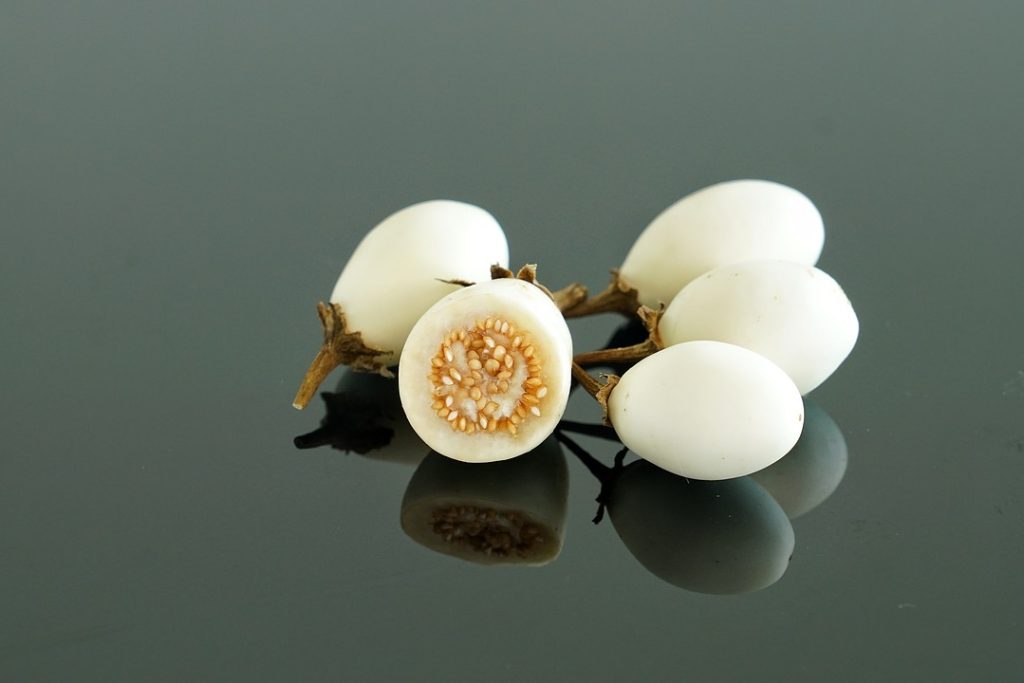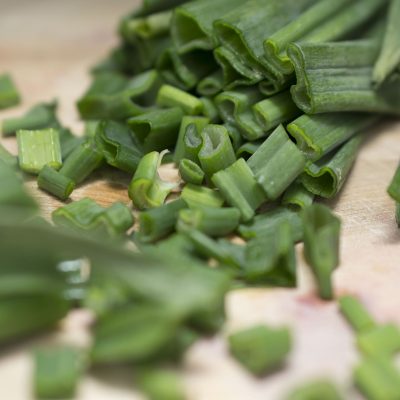You may be acquainted with conventional purple eggplants, but have you heard of white eggplants? Yes, white eggplants, often known as garden eggs! They may seem strange, but this silky white and creamy vegetable tastes equally as wonderful as, if not better than, its more renowned purple version. This vegetable is not only rich in taste but also in nutrients, and it can be found in meals such as the movie Ratatouille, Baba Ganoush, or a basic eggplant sauté.
What Are White Eggplants?
White eggplants, botanically classified as a fruit, especially a berry, are a vegetable that belongs to the Solanaceae family, together with tomatoes, chile, and bell peppers. This delicacy, known as eggplant in North America, aubergine in Britain, and brinjal in South Asia, gained its name in the 1700s owing to its resemblance to hen eggs.
Although less known than the deep purple variety, white eggplants varieties are numerous in number, all deliciously subtle in flavor. White eggplants are particularly characterized by their egg-like glossy ivory skin on the outside, and thick, creamy, meaty texture inside.
Health Benefits
White eggplants are rich in nutrients like potassium, Vitamin K and C, iron, and magnesium, and are high in antioxidants.
Moreover, they are great for controlling heart issues, controlling blood sugar levels, aiding in weight loss, and contributing to fighting cancer cells.
Read more: Best Multivitamin For Teens | How To Eat Healthy Food Everyday
Nutritional Value Of White Eggplants
A 100-gram serving contains:
- Calories 25 grams
- Protein 1 gram
- Fat 0.2 grams
- Carbohydrates 6 grams
- Fiber 3 grams
Where Did White Eggplant Originate From?
Initially native to the Subcontinent countries, particularly India and Bangladesh the vegetable then spread to the rest of the world through trading and exporting.
Varieties Of White Eggplants
There are multitudes of white eggplant varieties such as the following:
- Casper: Characterized by ivory skin, and thick, long length
- Clara: This variety is an Italian crossbreed, characterized by its relatively small size and average thickness
- Ghostbuster: Characterized by their white color and oval shape with a distinctly sweet undertone
- Japanese White Egg: Similar to its name, this variety produces ivory colored, small, rounded fruit that resembles eggs
- Thai White Ribbed: Similar in its ribbed appearance to heirloom tomatoes, with a rounded shape, and often white to green-yellow colors
Other varieties include Cloud Nine, Bianca di Imola, Lao White, Gretel, Crescent Moon and so much more
Two Kinds Of White Eggplants
White eggplants are classified into two types: decorative white eggplants and domesticated white eggplants. Ornamentals, as the name implies, are usually cultivated for adornment because of their silky white, egg-like look against garden foliage. They are unpalatable. Domesticated species are those that produce edible fruits.
Difference Between Purple And White Eggplant?
The main distinguishing feature between the black-purple-bred variety and the snowy white variety is of course their color. While almost all white eggplant varieties sport a silky ivory color, the purple variety range from deep blackish purples to lighter purples.
The white eggplant has a tougher skin than its counterparts, so it needs to be peeled before cooking it, whereas the purple variety has a relatively thin skin and can be cooked with the skin on. The white eggplant species is also known to be less bitter and acidic as compared to the purple species.
What Does White Eggplant Taste Like?
It has a pleasantly sweet taste and a rich creamy texture when used in meals. Make careful to avoid eating underripe or overripe eggplant, since both may have an unpleasant flavour.
When To Harvest?
When cultivated from seeds, the majority of the plants will provide completely ripe fruit for around 100 to 120 days. It will take around 70 to 90 days if they are transplanted. Regardless, pick your fruit before the skin begins to yellow. Gently press your fruit to see whether it is ripe. If an imprint remains, it is ripe and ready to harvest; if not, it should be left to grow.
Beginners Guide: How to grow white eggplant at home?
Explore more related articles:





